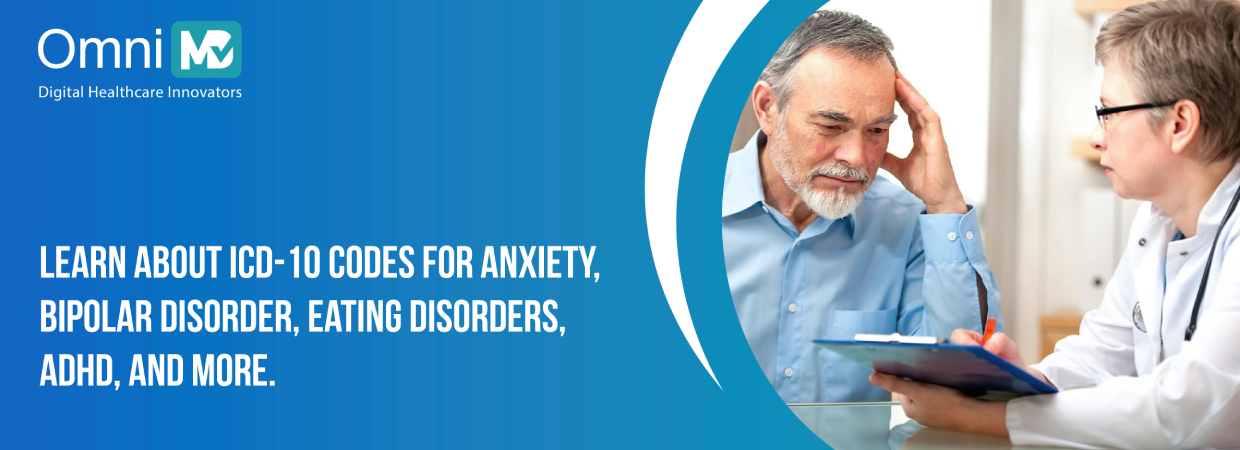Frequently Used ICD-10 Codes in Behavioral Therapy
Medical billing and reimbursement rely heavily on two coding systems: the International Classification of Diseases (ICD) and the Current Procedural Terminology (CPT). These coding frameworks serve complementary but distinct purposes. While CPT codes describe what services, procedures, and treatments were provided to the patient, such as visits, surgeries, and follow-ups, ICD codes explain why those services were necessary. They capture the underlying medical conditions, diagnoses, and reasons for care, forming the foundation for medical justification and insurance claims.
In this blog, our focus is on ICD, its origins, evolution, and critical role in mental healthcare documentation and reimbursement. Initially developed to classify causes of death, in 1948 the World Health Organization (WHO) assumed responsibility for preparing and publishing revisions to the ICD every ten years. This marked a pivotal shift as ICD became a global standard not just for mortality statistics but also for clinical documentation of diseases and conditions across healthcare systems.
Over time, countries around the world have customized the ICD framework to align with their own medical and administrative needs. In the United States, this led to the development of ICD-9-CM and its more advanced successor, ICD-10-CM/PCS (Clinical Modification/Procedure Coding System). These adaptations were aimed at supporting patient care documentation, billing accuracy, public health tracking, and policy planning.
Why Understanding ICD-10 for Mental Health Care is Necessary
ICD-10, the tenth revision of the classification system published by WHO, introduced a dramatic expansion in scope and detail. With over 70,000 alphanumeric codes, each ranging from 3 to 7 characters, it offers unprecedented specificity. Codes can represent not only the disease but also variables such as anatomical location, severity, encounter type, and even the device used. This granularity allows for more precise reporting and supports the addition of new codes as medical knowledge evolves.
In mental health, disorders vary widely from anxiety and depression to schizophrenia and bipolar disorder, each defined by its own diagnostic criteria. Patients often encounter multiple overlapping symptoms, underscoring the criticality of ICD-10 coding in documentation and delivering high-quality care.
That said, effective mental health coding demands a deep understanding of the subtle distinctions between conditions. For example, differentiating between major depressive disorder and dysthymia relies on recognizing key factors such as symptom duration and severity. In such scenarios, coding inaccuracies can lead to inappropriate treatment plans and compromised health data integrity.
On the contrary, when mental health conditions are accurately coded, the benefits extend well beyond individual patient encounters. Precise coding contributes to systemic improvements across clinical, operational, and research domains, including:
- Improved diagnostic accuracy, enhanced care quality, and better patient outcomes, while also reducing follow-up documentation requests.
- More effective monitoring of mental health trends and global health threats, which in turn informs sound healthcare policy decisions.
- Fewer coding errors, faster reimbursement cycles, and a reduction in claim denials.
- Enhanced analysis of health patterns and clinical outcomes, providing a stronger foundation for research.
- Fairer reimbursement aligned with value-based care models.
- Reduced ambiguity in documentation, aiding in the identification of inconsistencies and helping to prevent fraudulent claims.
What are the most used ICD-10 codes in behavioral health?
Anxiety Disorders
| In 2024, 43% of U.S. adults reported feeling more anxious than the previous year.
- F41.1: Generalized anxiety disorder
- F40.10: Social phobia, unspecified
- F40.00: Agoraphobia, unspecified
- F41.0: Panic disorder without agoraphobia
Major Depressive Disorder (MDD)
| 8.5% of U.S. adults (approximately 21.9 million people) experience major depressive episodes
- F32.0: Mild depressive episode
- F32.1: Moderate depressive episode
- F32.2: Severe depressive episode without psychotic symptoms
- F33.1: Major depressive disorder, recurrent, moderate
Post-Traumatic Stress Disorder (PTSD)
| In the U.S., the lifetime prevalence of PTSD is 10-12% for women and 5-6% for men.
- F43.10: Post-traumatic stress disorder, unspecified
- F43.11: PTSD, acute
- F43.12: PTSD, chronic
Bipolar Disorder
| In 2023, approximately 3.1 million American adults (1.5% of the adult population) were living with bipolar disorder.
- F31.0: Bipolar affective disorder, current episode hypomanic
- F31.1: Bipolar affective disorder, current episode manic without psychotic symptoms
- F31.2: Bipolar affective disorder, current episode manic with psychotic symptoms
- F31.3: Bipolar affective disorder, current episode mild or moderate depression
Attention-Deficit/Hyperactivity Disorder (ADHD)
| Affects approximately 10% of children in the U.S., making it one of the most common neurodevelopmental disorders in childhood.
- F90.0: ADHD, predominantly inattentive type
- F90.1: ADHD, predominantly hyperactive-impulsive type
- F90.2: ADHD, combined type
Schizophrenia Spectrum and Other Psychotic Disorders
| Affects approximately 1.5% of U.S. adults aged 26 to 44, with a lifetime prevalence of 2.1% in this age group.
- F20.0: Paranoid schizophrenia
- F20.1: Hebephrenic schizophrenia
- F20.2: Catatonic schizophrenia
- F20.3: Undifferentiated schizophrenia
Eating Disorders
| In 2023, the prevalence of eating disorders among men ranged from 0.74% to 2.2%.
- F50.0: Anorexia nervosa
- F50.2: Bulimia nervosa
- F50.8: Other eating disorders
- F50.9: Eating disorder, unspecified
Sleep-Wake Disorders (Psychiatric-Related)
| In 2023, 37% of U.S. adults reported sleeping somewhat or much worse compared to previous years.
- G47.00: Insomnia, unspecified
- G47.01: Insomnia due to a medical condition
- F51.01: Primary insomnia
- F51.3: Sleepwalking disorder
How OmniMD Leverages Advanced Technology to Simplify ICD-10 Coding and Reimbursement
Continuously updated with federal, state, and payer-specific guidelines, OmniMD’s cloud-based EHR and RCM solutions simplify mental health workflows by automating the most time-consuming aspects of coding and billing.
At its core is AI-powered ICD-10 and CPT coding that extracts diagnostic data from clinical notes, assigns the most appropriate codes, and flags discrepancies. Whether it’s distinguishing between F32.1 and F33.1 or identifying ADHD subtypes, our software is designed to enhance accuracy across the board.
Beyond coding, the platform auto-generates and submits claims in real time, summarizes encounters, and accelerates reimbursements. For denials, built-in denial management provides actionable insights, closing revenue gaps with minimal manual effort.
That means, with us, you don’t have to choose between clinical precision and operational efficiency; you get both.
Related Article :

Master the ICD-10 Codes Every Therapist Needs
Stay accurate, compliant, and efficient in every session.

 Written by Neha Singh
Written by Neha Singh
 Reviewed by Shivani Joshi
Reviewed by Shivani Joshi